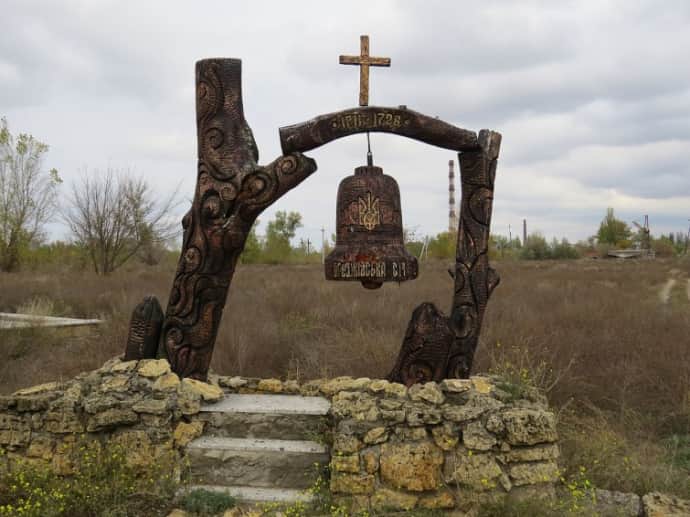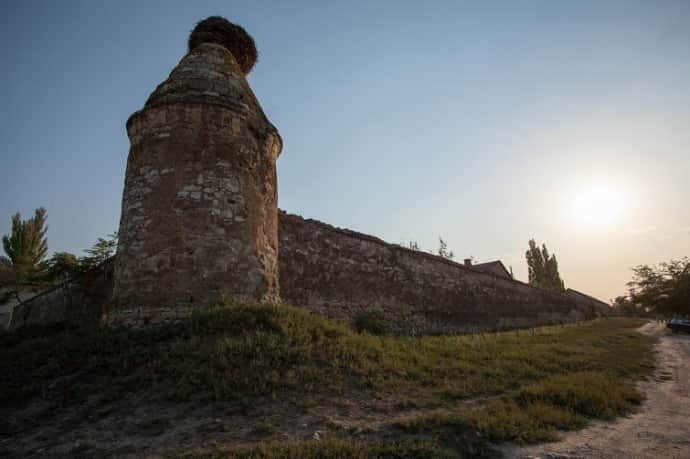Archaeologist lists biggest historical losses caused by destruction of Kakhovka power plant
Archaeologist Denys Sikoza, who survived the occupation of Kherson and rescued historical artefacts from the Russians, has spoken about the most valuable sites that were damaged by the Russians when they blew up the Kakhovka hydroelectric power plant. "The most unique and most damaged heritage site is located on the left bank. This is the Oleshky Cossack Sich [an administrative and military centre of the Zaporizhzhian Cossacks].
This is one of the two Sichs that have survived to date. It's simply been flooded. And the flooding will have a negative impact on the condition of the archaeological material that is there," Sikoza told Ukrainska Pravda.Kultura.
The archaeologist added that the Oleshky Sich is an archaeological site and it still needs further research: "There are objects ranging from ceramics to metal products, possibly wooden remains. We do not know what is there. There have been excavations there - a blacksmith's workshop was excavated.
Various things made of glass, bronze and iron were found."
 The Oleshky SichPhoto: Wikipedia
The Oleshky SichPhoto: Wikipedia
According to Sikoza, the artefacts found at the Sich were taken to the Kherson Archaeological Museum, which was looted by the occupiers last year - so he assumes that these could also have been stolen.
Advertisement:Among the worst-affected valuable cultural heritage sites, the archaeologist also named the historic centre of Nova Kakhovka, which is an example of a unique town planning project; the Korsunskyi monastery, the remains of one of the largest monasteries in the south (17th - early 19th centuries); the Yahorlytske settlement, one of the earliest Greek settlements in Ukraine; and the Bronze Age sites in the village of Krynky. Sikoza noted that all the ancient and barbarian settlements situated below the hydroelectric power plant are under threat: "They are located on the shore and may be threatened by erosion processes. They are not flooded, but they are being washed away.
We don't know how long the water will stay there."
 Walls of the Korsunskyi monastery.Photo: Wikipedia
Walls of the Korsunskyi monastery.Photo: Wikipedia
Earlier, the Ministry of Culture and Information Policy posted a list of museums and cultural heritage sites in Kherson Oblast that have already been flooded or are at risk of flooding as a result of the explosion at the Kakhovka hydroelectric power plant. According to the Ministry, as of the end of the day on 6 June, the affected sites include the Kakhovka HPP facilities built in 1951-1958; the Central Square buildings in Nova Kakhovka, the buildings in the historic centre of the same city, etc.
We have launched English Twitter! Follow us!
The State Agency for Tourism Development of Ukraine has shared a map of monuments and natural recreational resources that are under threat due to the actions of the Russians.
The water is also threatening painter Polina Raiko's house museum in Oleshky. Archaeologist Svitlana Biliaieva, who led a research study into the Tiahynka Fortress, a unique architectural monument dating back to the 14th and 15th centuries in the village of Tiahynka in the Beryslav district of Kherson Oblast, said that the fortress is currently flooded. The Oleksii Shovkunenko Kherson Oblast Art Museum, which was looted by Russian occupiers last autumn, was not affected by the flooding.
Journalists fight on their own frontline. Support Ukrainska Pravda or become our patron!